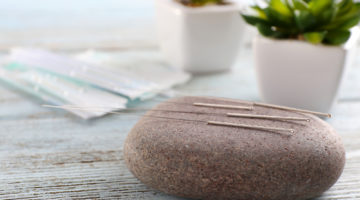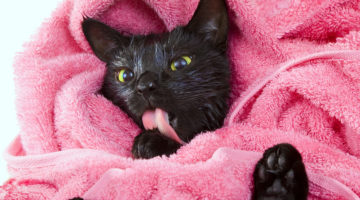You may think hairballs just come with the territory when you have a kitty. It’s true that most cats will throw up the occasional hairball, but if it happens a lot, it may mean an underlying health issue.
If you have a cat, you’re probably familiar with hairballs, those yucky sausage-shaped lumps of hair that she occasionally regurgitates on your floors or furniture. While you may assume hairballs are normal and natural, if your cat chucks them up on a frequent and regular basis, she may have a health problem that needs to be addressed.
Hairballs may have several causes
When a cat grooms herself, the little hooks on her tongue pull out loose hair. This hair is swallowed and ends up in the gastrointestinal system. In a healthy cat, the hair will move normally through the GI tract to be passed in the feces. In some cases, however, the hair accumulates in the stomach and forms a dense clump that eventually has to be passed through vomiting. Because the wad of hair has to move through the esophagus on the way back up, it usually appears tubular in shape once it’s out on your floor.
1. Up until fairly recently, it was believed that hairballs were simply caused by too much shedding, leading to excessive ingestion of fur. And this is certainly a factor. Longer-haired breeds such as Persians, Himalayans and Maine Coons can be especially prone to hairballs. But even short-coated breeds can develop hairball problems.
2. Excessive grooming may be an issue with some cats. Allergies or other uncomfortable skin problems that prompt a lot of licking and biting may result in the ingestion of extra fur. Excessive grooming may also be a behaviorial problem arising from stress, or can even indicate a neurological condition. So if your cat seems to spend an inordinate amount of time washing herself, whether she has hairballs or not, take her to the vet for a checkup.
3. In recent years, with more studies being done on the gut microbiome in humans and animals, another reason for hairballs in cats has come to light. The gut microbiome is a system comprising billions of microorganisms that inhabit the gastrointestinal tract. When the microbiome gets out of balance, a variety of digestive problems can result. Gut motility is affected, which means ingested fur doesn’t pass through the GI tract as it should. Instead, it builds up in the stomach, from which it eventually has to be voided through vomiting.
What should you do about hairballs?
The best way to treat hairballs is to get to the root cause of the problem before taking steps to alleviate it.
- If your cat is regularly throwing up hairballs, start by taking her to a holistic or integrative vet for an evaluation. This is the only way to determine if there are any underlying health problems that may be contributing to the hairballs.
- Avoid commercial hairball remedies. Many of these contain petroleum, and it doesn’t take rocket science to know that giving your cat petroleum can’t be good for her.
- Switching to a high quality, whole meat-based and grain-free diet can also help. A good diet improves overall wellness, including gut health and motility. Take it very slow when switching your cat to a new diet – too abrupt a change can result in digestive upsets and diarrhea.
- Make sure your cat has 24/7 access to fresh, pure water. If she doesn’t seem to drink as much as she should, add a bit of warm water to her food, or invest in a pet drinking fountain – many times, cats are more attracted to water that’s moving.
- Be sure to groom your cat regularly, especially if she’s long-coated. Many cats love being brushed. Be sure to use grooming tools that won’t scratch her skin.
- Ask your vet about any supplements your cat might benefit from. For example, Omega-3s can improve her skin and coat health and help reduce shedding, while probiotics may be needed to help balance her intestinal flora, if this is a problem.
Hairballs may seem like nothing much to worry about — and if they happen only rarely, they probably aren’t. But if your cat is regurgitating them frequently and regularly, it’s time to take her to the vet to find out what’s going on, do what’s need to fix the problem — and minimize the number of messes you have to clean up!







No Comment